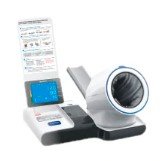Ensuring Safety in Phlebotomy: Adherence to Protocols, Training, and Best Practices
Summary
- Adhering to safety protocols and procedures is crucial for phlebotomists to minimize risks and prevent accidents in the medical lab.
- Proper training and education on safety measures, personal protective equipment, and infection control are essential for phlebotomists to ensure their safety and the safety of others.
- Regularly updating knowledge on best practices, guidelines, and Regulations in phlebotomy can help phlebotomists stay informed and maintain a safe working environment.
Introduction
Phlebotomists play a vital role in healthcare facilities by collecting blood samples for diagnostic testing and analysis. While this job is essential for patient care, it also comes with potential risks and safety hazards. It is crucial for phlebotomists to ensure their safety and the safety of others while collecting and handling blood samples in a healthcare facility setting. This article will discuss how phlebotomists can minimize risks and prevent accidents through adherence to safety protocols and procedures, proper training and education, and staying informed on best practices in phlebotomy.
Adherence to Safety Protocols and Procedures
One of the most important aspects of ensuring safety in phlebotomy is adherence to safety protocols and procedures. This includes following established guidelines for collecting and handling blood samples, as well as complying with infection control measures to prevent the spread of pathogens. Some key safety protocols and procedures that phlebotomists should always follow include:
- Proper Hand Hygiene before and after each patient encounter
- Wearing appropriate personal protective equipment, such as gloves, gowns, and masks
- Properly identifying patients and verifying their information before collecting blood samples
- Using safety devices and techniques to minimize the risk of Needlestick Injuries
- Properly disposing of sharps and biohazardous waste in designated containers
Proper Training and Education
Phlebotomists should undergo comprehensive training and education on safety measures, personal protective equipment, and infection control to ensure their safety and the safety of others. This training should cover key topics such as bloodborne pathogens, proper needle handling techniques, and safe disposal of biohazardous materials. Additionally, phlebotomists should receive training on how to respond to emergencies and accidents, such as Needlestick Injuries or exposure to bloodborne pathogens.
Key components of training and education for phlebotomists include:
- Understanding the risks and hazards associated with phlebotomy procedures
- Proper techniques for collecting blood samples and handling specimens
- Recognition of potential safety issues and how to address them
- Knowledge of relevant Regulations and guidelines for phlebotomy practices
- Regular updates and refresher training on safety measures and best practices
Staying Informed on Best Practices
Phlebotomists should stay informed on current best practices, guidelines, and Regulations in phlebotomy to maintain a safe working environment. This includes keeping up to date on new developments in phlebotomy techniques, safety equipment, and infection control measures. Phlebotomists can stay informed through Continuing Education programs, attending conferences and workshops, and participating in professional organizations that provide resources and updates on best practices in phlebotomy.
Key strategies for staying informed on best practices in phlebotomy include:
- Participating in Continuing Education programs to stay up to date on changes in the field
- Attending conferences and workshops to learn about new techniques and technologies in phlebotomy
- Joining professional organizations that provide resources and updates on best practices in phlebotomy
- Regularly reviewing and updating knowledge on safety protocols and procedures
- Seeking guidance from experienced phlebotomists and mentors in the field
Conclusion
Ensuring safety in phlebotomy is essential for phlebotomists to minimize risks and prevent accidents in the medical lab. By adhering to safety protocols and procedures, receiving proper training and education, and staying informed on best practices in phlebotomy, phlebotomists can maintain a safe working environment and protect their own safety and the safety of others. It is crucial for phlebotomists to prioritize safety in their practice to provide quality care for patients and contribute to a safe and efficient healthcare environment.

Disclaimer: The content provided on this blog is for informational purposes only, reflecting the personal opinions and insights of the author(s) on the topics. The information provided should not be used for diagnosing or treating a health problem or disease, and those seeking personal medical advice should consult with a licensed physician. Always seek the advice of your doctor or other qualified health provider regarding a medical condition. Never disregard professional medical advice or delay in seeking it because of something you have read on this website. If you think you may have a medical emergency, call 911 or go to the nearest emergency room immediately. No physician-patient relationship is created by this web site or its use. No contributors to this web site make any representations, express or implied, with respect to the information provided herein or to its use. While we strive to share accurate and up-to-date information, we cannot guarantee the completeness, reliability, or accuracy of the content. The blog may also include links to external websites and resources for the convenience of our readers. Please note that linking to other sites does not imply endorsement of their content, practices, or services by us. Readers should use their discretion and judgment while exploring any external links and resources mentioned on this blog.
